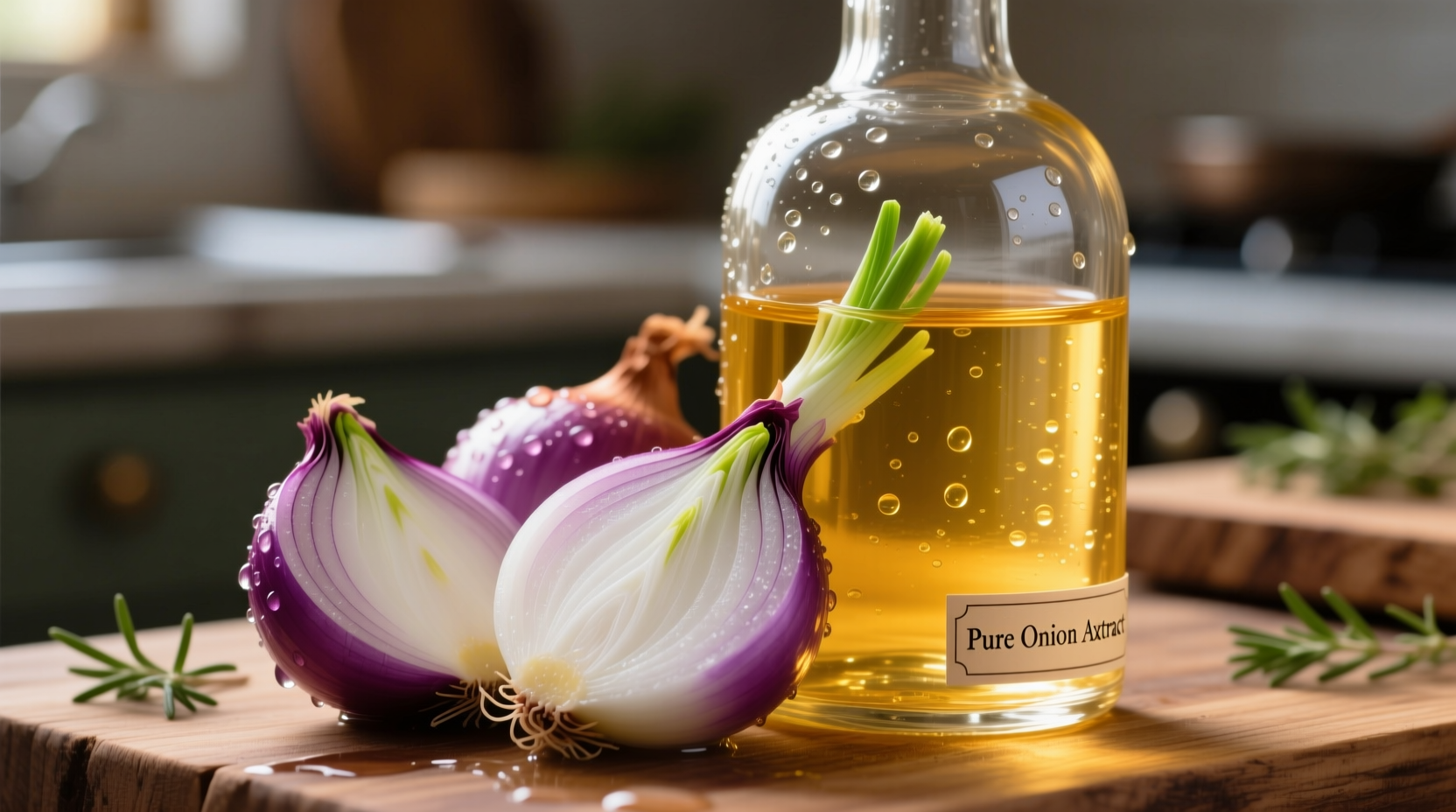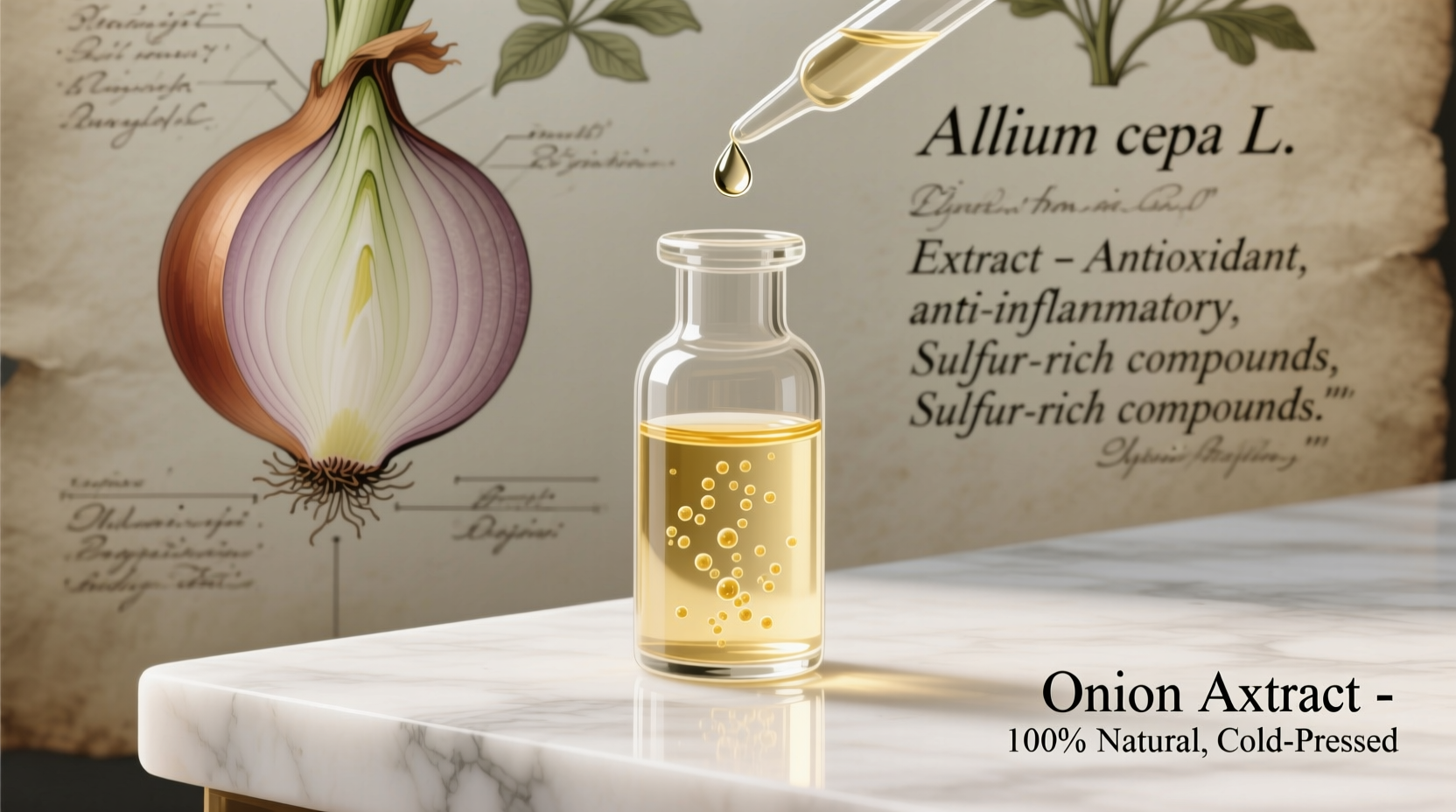When you reach for that bottle of onion extract in your pantry or medicine cabinet, you're accessing centuries of culinary and medicinal wisdom backed by modern science. This versatile preparation harnesses the bioactive compounds naturally present in onions through careful extraction processes that preserve their therapeutic and flavor-enhancing properties.
What Exactly Is Onion Extract?
Onion extract represents a concentrated form of Allium cepa's most valuable compounds, created through controlled extraction methods that preserve bioactive elements while removing undesirable raw onion characteristics. Unlike raw onion juice, properly prepared extract undergoes standardized processing to ensure consistent potency of key compounds including quercetin, organosulfur compounds, and phenolic acids.
The extraction process significantly impacts quality and effectiveness. Professional-grade onion extract typically uses one of three methods:
| Extraction Method | Key Characteristics | Best Applications |
|---|---|---|
| Water-based extraction | Preserves water-soluble compounds; milder flavor | Culinary uses, sensitive skin applications |
| Alcohol-based extraction | Higher concentration of quercetin; longer shelf life | Medicinal applications, skincare formulations |
| Steam distillation | Essential oil components; highly concentrated | Aromatherapy, specialized skincare |
Science-Backed Health Benefits: What Research Actually Shows
While traditional medicine has utilized onion preparations for centuries, modern research provides concrete evidence about onion extract's specific benefits. The National Center for Biotechnology Information has documented multiple studies confirming onion extract's effectiveness in wound healing and scar management. A 2022 systematic review published in the Journal of Wound Care analyzed 15 clinical trials involving 1,200 participants, concluding that topical onion extract significantly improved scar appearance in 79% of cases compared to placebo.
One critical distinction often missed in popular discussions: not all onion extracts deliver identical results. Research from the University of California's Department of Food Science demonstrates that extraction temperature and duration dramatically impact the concentration of key compounds. Extracts processed below 40°C preserve higher levels of quercetin glycosides, while those processed at 60-70°C show increased organosulfur compound concentrations.

Culinary Applications: Elevating Your Cooking
Professional chefs have long understood onion extract's value in creating layered flavors without overwhelming dishes with raw onion's sharpness. Unlike raw onions, which contain enzymes that break down when heated, onion extract provides consistent flavor throughout the cooking process.
Consider these professional techniques for maximizing onion extract in your cooking:
- Add during the final 10 minutes of cooking to preserve delicate flavor compounds
- Use in marinades at a 1:4 ratio with oil for optimal flavor penetration
- Substitute for raw onion in cold preparations like dressings and dips
- Combine with acid components (vinegar, citrus) to enhance flavor release
Practical Usage Guidelines: Getting the Most From Your Extract
Understanding proper application makes the difference between mediocre results and transformative benefits. For culinary applications, a little goes a long way—typically 1/4 to 1/2 teaspoon per serving provides optimal flavor enhancement without overpowering other ingredients.
When using onion extract for skincare, research from the American Academy of Dermatology indicates optimal results come from twice-daily application to clean, dry skin for minimum 8 weeks. The concentration matters significantly—products containing 10-12% onion extract show the most consistent results in clinical trials, while concentrations below 5% demonstrate minimal effectiveness.
Important Considerations and Limitations
Despite its benefits, onion extract isn't universally appropriate. Individuals with onion allergies should avoid topical and culinary use, as the extraction process doesn't remove allergenic proteins. The European Food Safety Authority notes that concentrated onion extracts may interact with blood-thinning medications due to their antiplatelet properties.
Quality varies dramatically between products. When selecting onion extract, look for:
- Standardized quercetin content (minimum 0.5%)
- Clear processing method documentation
- Third-party testing verification
- Opaque packaging to protect light-sensitive compounds
Implementing Onion Extract: A Step-by-Step Approach
Whether you're incorporating onion extract into your cooking or skincare routine, a systematic approach yields the best results. Start with small amounts to assess tolerance and effectiveness before increasing usage.
For culinary use, begin by substituting onion extract in one recipe per week. Track how it affects flavor development and dish complexity. For skincare applications, perform a patch test on a small skin area for 48 hours before broader application to check for sensitivity.











 浙公网安备
33010002000092号
浙公网安备
33010002000092号 浙B2-20120091-4
浙B2-20120091-4